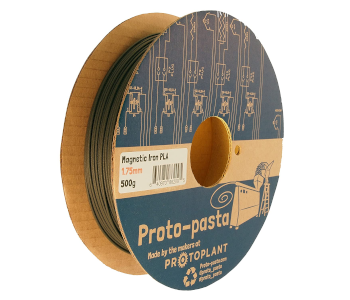Is It Possible to 3D Print Magnets?
The possibilities of 3D printing seem to continue to expand. In this article, we look at how 3D printing technology can be leveraged to create magnets. Aside from being all-around awesome, magnets play a huge role in a lot of commercial and industrial applications. They are also difficult and time-consuming to make.
With the capabilities of 3D printing, could it be the technology that ushers in new and more practical ways of creating magnets? To answer this question, we’ll have to delve into the concept of how magnets work and attempt to reconcile it with how 3D printers work.
What makes magnets ‘magnetic’?

Before we can even begin to explore the possibility of creating magnets through 3D printing, we need to understand what it is about magnets that make them magnetic. Considering how common magnets are (you probably have more than a dozen on your refrigerator alone), it is ironic how knowledge of how they work is very uncommon.
At the very core of magnetism is the idea that the electrons in every element have an intrinsic ‘spin.’ Quite literally, this means that the electrons spin around an axis as an effect of the repulsion and attraction of an electron with protons and other fellow electrons. In the same way that current flowing across a coil creates a magnetic field, the spin of an electron also creates a magnetic dipole moment.
Despite all materials having spinning electrons that create a magnetic moment, not all materials are magnetic. In naturally non-magnetic materials, these magnetic moments come in pairs oriented at opposite directions, essentially canceling each other out. This is prevalent at the molecular level and cannot be altered to induce magnetism in a material that is innately non-magnetic.
Materials that can become magnetic are called ferromagnetic materials. In these materials, the presence of unpaired magnetic moments results in a magnetic field that is oriented in a specific direction. However, not all objects made out of ferromagnetic materials are automatically magnetic. In their raw form, the unpaired magnetic moments are only confined in pockets, called magnetic domains.
In an unmagnetized material, these magnetic domains are discrete and distributed randomly. Thus, there are merely magnetized pockets that effectively also cancel each other out. To magnetize an object, these domains are exposed to a very strong magnetic field so that they can be aligned to a common direction.
Another method to create magnetized objects is for the grains to be aligned during manufacturing by subjecting the raw material to high pressure. This creates a much stronger magnetic field, as it means that more of the grains in an object is aligned to the preferred direction.
Alloys made from rare-earth magnets have become the preferred material for creating magnets since the early 1980s. There are two types of rare-earth metals used for this application – neodymium and samarium-cobalt. Rare-earth metals are valued because they can hold stronger magnetic dipole moments. However, these rare-earth metals are also very expensive.
Is there a currently existing magnetic filament?

To put it briefly, yes, there are filaments used in 3D printing that are marketed as ‘magnetic.’ The Composite Iron PLA filament from Proto-pasta is a good choice, as is the Ferromagnetic PLA from Black Magic 3D. As is apparent with their names, these composite filaments are made of solid ferromagnetic particles suspended in a PLA matrix. This makes them fairly easy to print with, although you may have to deal with brittleness
However, you’ll have to manage your expectations when it comes to these products. Although made of ferromagnetic materials, the grains embedded in these filaments are not uniformly aligned. This means that they may react to a magnetic field but do not emit a magnetic field themselves.
Despite the limitations, 3D printing with ferromagnetic materials can still be useful for several applications. You can make design pieces, home fixtures, and fashion accessories with magnetic properties. It’s even possible to create replacement magnetic sensors, actuators, mechanical engineering parts, magnetic storage media, and custom-made stators for brushless motors.
The solid particles embedded in these filaments are mostly made of iron. This presents an opportunity to finish a magnetic print via rusting. This is done by simply sanding the outer surface of the finished print to expose some of the iron particles and submerging the whole object in saline water for 2 to 3 days. This results in rusting of the iron particles which creates a gorgeous reddish-brown finish.
If you’re going to use a magnetic filament to 3D print functional engineering parts, you will need to consider the effect of the plastic matrix on the properties of the finished print. These magnetic filaments contain anywhere between 20% to 40% PLA which diminishes the strength with which it reacts to magnetic fields. This could be crucial for magnetic sensors and stators which are used in highly sensitive operations.
Magnetic filaments also suffer from the usual drawbacks of composite filaments. They are very brittle and easy to snap, so you need to make sure that the filament does not go through sharp corners on its way from the spool to the extruder. The presence of iron particles also makes magnetic filaments very abrasive. If your printer is equipped with a brass nozzle, you may want to swap it out for a wear-resistant nozzle with a slightly wider diameter.
Current research on 3D printing magnets

The fact that you can’t 3D print magnetic objects using your standard desktop 3D printer may be disappointing, but that does not mean that it won’t be possible in the future. Studies are already underway that look into 3D printing as a means to more quickly manufacture permanent and soft magnets.
One of the more high-profile attempts to create a magnetic object thru 3D printing was undertaken by a group of students from MIT in 2018. The group used a filament infused with magnetic particles, just like the products we’ve listed above, but had an electromagnetic mounted on the nozzle of the 3D printer. This resulted in the magnetic particles getting aligned in directions controlled by the electromagnet.
The result of the MIT project was a series of 3D printed constructs that reacted to an external magnetic field in predictable ways. By introducing diversity in the directions in which the grains were aligned, the team was able to come up with objects that can do more than just bend or stretch when exposed to a magnetic field – they can move and take on different shapes. In a way, the team created “soft robots” that can be controlled with no need for physical contact or wireless communication technology.
In a published paper, a group of researchers from the Vienna University of Technology created a custom 3D printing filament using a combination of soft and hard magnetic particles embedded in a polyamide filler. The goal of this study was to bridge the gap between the magnetic strength of sintered magnetic powder and that of 3D printed objects made via extrusion.
What set this study apart was the custom filament. By including rare-earth metals with other ferrites, they have proven that standard 3D printing can be used to create magnets with sufficient magnetic strength.
Right now, the farthest than any institution has gotten to actually make permanent magnets via 3D printing was via the Big Area Additive Manufacturing (BAAM) machine. This was the brainchild of the Oak Ridge National Laboratory (ORNL) by the Department of Energy (DOE).
The raw material for this effort was very similar to the project by the Vienna University – particles of rare-earth magnets infused in a polyamide matrix. The biggest difference here is that they are delivered via pellets instead of filaments to keep up with the high-volume requirements of the BAAM machine. The process is pretty much still the similar, though. The pellets are melted and extruded through a nozzle on a build platform, with the movement of the nozzle controlled by the reference 3D model.
The work by ORNL has been a huge leap in the field of manufacturing of magnets as their finished products have been shown to be comparable to magnets produced via more traditional methods. Aside from the freedom to create magnets of various shapes, the biggest benefit of 3D printing is that it’s essentially a zero-waste process. This is particularly critical when manufacturing magnets made of rare-earth metals, as they are very expensive.
If the technology developed by ORNL takes off, it could prove to be revolutionary in the industries that manufacture various technologies including hard drives, turbines, and electric vehicles.
Final thoughts
For most people, their exposure to magnets comes in the form of trinkets or knick-knacks to be stuck on the fridge and forgotten. However, magnets are incredibly important in just about any industry. They are found in magnetic storage, magnetic strips, power plant turbines, motors, sensors, actuators, and batteries. It is no secret that any developments in the field of magnet manufacturing can be game-changing.
The idea of integrating magnets and 3D printing has been floating around for about a decade. The objective is to leverage the strengths of 3D printing to make magnets of various shapes and sizes, as well as reducing the time of manufacturing and the amount of material that goes to waste.





